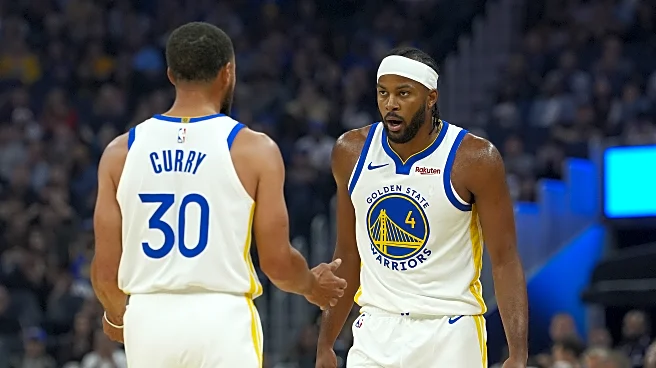What's Happening?
NBA teams are strategizing for the 2025-26 season by identifying ambitious trade targets to enhance their rosters. The Golden State Warriors, for instance, are considering acquiring Giannis Antetokounmpo to bolster their chances of securing another championship as Stephen Curry approaches his 38th birthday. This move is part of a broader trend where teams are looking to maximize their assets and prepare for potential market shifts involving high-profile players. The Warriors are particularly focused on maintaining their current assets, such as Jonathan Kuminga, to be ready for any opportunities that arise in the trade market.
Why It's Important?
The pursuit of high-profile players like Giannis Antetokounmpo by teams such as the Golden State Warriors underscores the competitive nature of the NBA and the strategic maneuvers teams undertake to remain championship contenders. Acquiring a player of Antetokounmpo's caliber could significantly impact the team's performance and standings, potentially altering the balance of power within the league. This strategy reflects the importance of asset management and foresight in professional sports, where teams must continuously adapt to changing market conditions and player availability to maintain their competitive edge.
What's Next?
As teams like the Warriors prepare for potential trades, the NBA landscape could see significant shifts depending on the success of these negotiations. The focus will be on how teams manage their current assets and whether they can successfully acquire top-tier talent without compromising their long-term goals. The outcome of these trade discussions could influence team dynamics, fan engagement, and the overall competitive environment in the league. Stakeholders, including team management and fans, will be closely monitoring these developments as the season progresses.
Beyond the Headlines
The strategic planning involved in these trade considerations highlights the complex nature of team management in the NBA. Beyond immediate performance improvements, these decisions have long-term implications for team culture, player development, and financial stability. The ethical considerations of trading players and the impact on their careers also play a role in these discussions, adding layers of complexity to the decision-making process.











